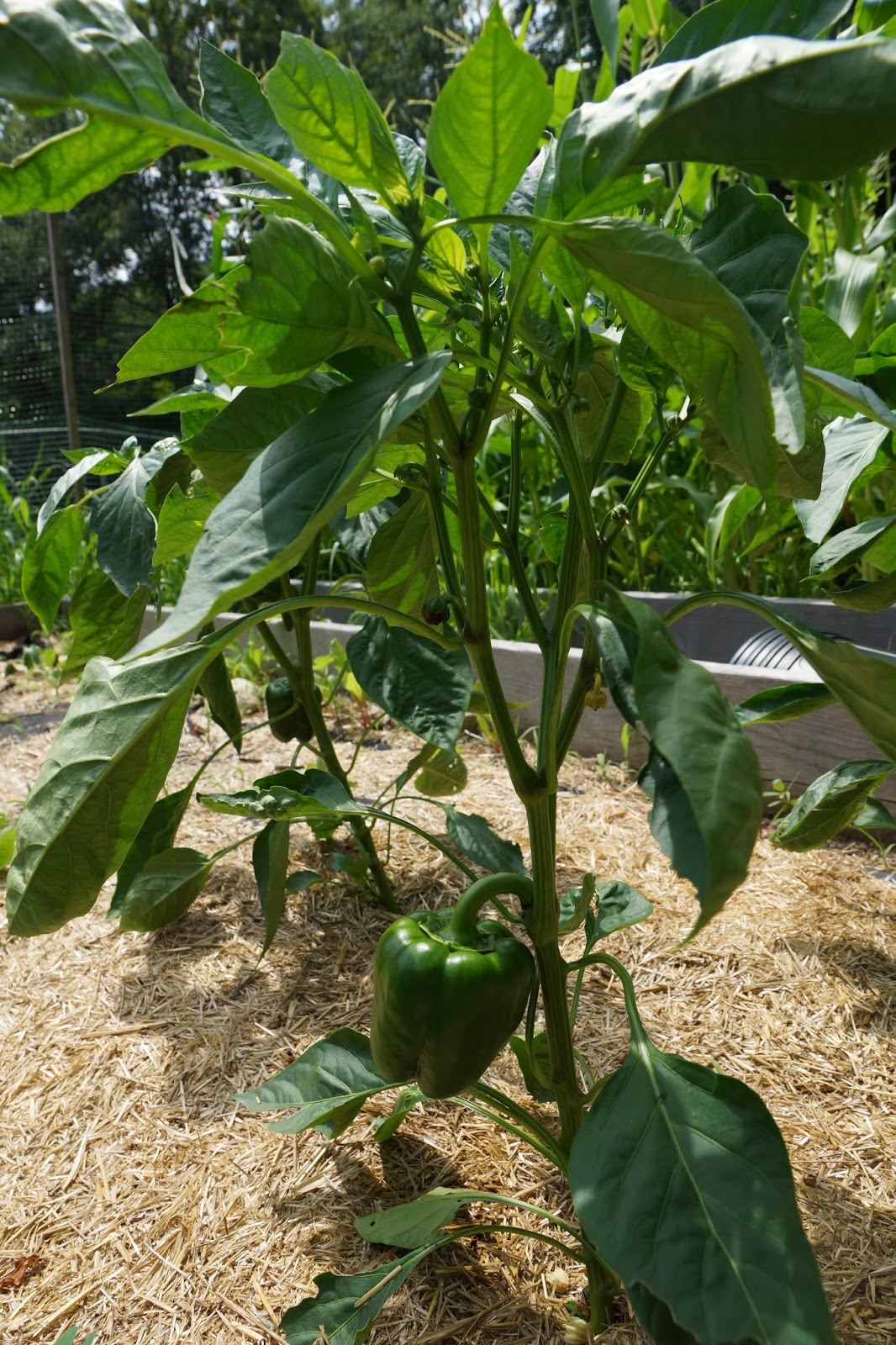2014 begins my fourth year of my vegetable garden and this year my goal is to bring it from hobby to mini-farming. Last year was wildly successful in many aspects. I planted about half of our vegetables crop from seed—carrots, beets, leeks, arugula, broccoli, snap peas, corn, zucchini, cantaloupe, and bush beans. All except the beans grew fantastically! (I think I got a bad pack of bean seeds because not one germinated either by direct sow or indoor planting). As far as starter plants, I purchased tomatoes, brussels sprouts, sweet red peppers, basil, and red cabbage. With these I had mixed results, which I will explain shortly.
 |
| Long shot of veggie garden |
Carrots—These grew well, though I continue to have problems with removing the carrots from the ground. This year I will try to amend the carrot rows with sand to make pulling them easier.
Beets—My new favorite vegetable to grow. I planted an heirloom variety last year that was pink in the center and turned white when cooked. It looked strange to have pale beets, but oh my, were they delicious. I planted two rows last year (about 25 full-sized beets) and I will double the size of our crop this year.
 |
| Beets |
 |
| Snap peas |
Arugula—I had received a free pack of seeds from somewhere and planted it. These plants were potent in flavor, bitter and spicy! A couple of leaves mixed into a big salad added a nice kick, but less was definitely more, and we had grown way more than can be used. Abandoning arugula this year and will use the space for something we enjoy.
 |
| Corn ears |
 |
Left: carrots
Right: baby leeks
|
Snap Peas—These plants need trellises and again I did not erect these correctly. Therefore, the plants produced only a fraction of what I'm sure they would have. Similarly, we continue to battle the groundhogs on our property and they got the better of our garden fence and ate two and a half of our four rows down to the ground. Regardless, these plants are easy to grow and easy to freeze and fun for the kids, so this year, I will make an actual trellis, secure the garden from the groundhogs, and hopefully reap the rewards.
 |
| Peppers |
Zucchini—Easy, easy, easy. We grew six plants between the corn rows and had so much we were having some sort of zucchini concoction nearly every day. And we were giving it away. And we were sick of zucchini by the end of the summer. I will be jarring a tomato/zucchini sauce this year to make use of all the excess.
Cantaloupe—We grew three cantaloupe vines that produced about 15 large succulent fruits—I've never tasted anything so delicious. We left a few on the vine too long and ended up with mushy fruit, so we will have to monitor ripeness with more conscientious effort this year. Similarly, we will be building a melon patch because the vines took over our entire garden, crowding out our brussels, tomatoes and broccoli.
 |
| Broccoli |
 |
| Tomatoes |
Red Peppers—I planted three plants and each produced three or four peppers. Several of the fruits developed black spots on them; I'm not sure if these were bug problems? These plants grow slowly and it takes a while for the peppers to turn red. Delicious, but space/time ratio to product—not the best. But peppers are so expensive in the store, maybe I'll try one more year.
Tomatoes—I planted six tomato starter plants purchased from Home Depot, and they produced more tomatoes that we could both eat AND give away. We actually didn't have enough time to keep up with harvesting due to our summer vacation schedules and pounds ended up rotting on the vine or the ground.
 |
| Corn field |
So upon reflecting, here are the goals for this year—it is a lofty list, especially since I'm working full time, but here goes:
1) Preserving the harvest—We have invested in a dehydrator will be purchasing a pressure canner, vacuum sealer, and deep freezer. Therefore, I will try to increase my yields in our highly-consumed foods—tomatoes, broccoli, spinach, brussels sprouts, peas, beans, leeks, and zucchini.
2) Drip irrigation—I need to free up my time and that alone is worth the initial expense of the drip system. This is a spring weekend project for hubby.
3) Reconfigure the raised beds / build new plots—Right now we have three, 12x12 raised beds. We will reconfigure these into eight, 3.5x12 beds. This will allow us to completely utilize all the soil space for plants and avoid walking through the bed for harvesting and weeding. In addition, we will move the corn and melons into their own plots in different locations on the property.
4) Composting—I haven't amended the soil since inception, though I have fertilized each year. I will order a truckload of compost this year, but will start making my own to avoid fertilization costs.
5) Deer-proof the property, AGAIN—The deer and weather both decimated our property fence. We need to install and industrial-quality system this year. These critters are the bane of my existence.
6) Save seeds—This is the last priority, but we'll see if I can't figure it out.
 |
| Harvesting |
 |
| Melons |
